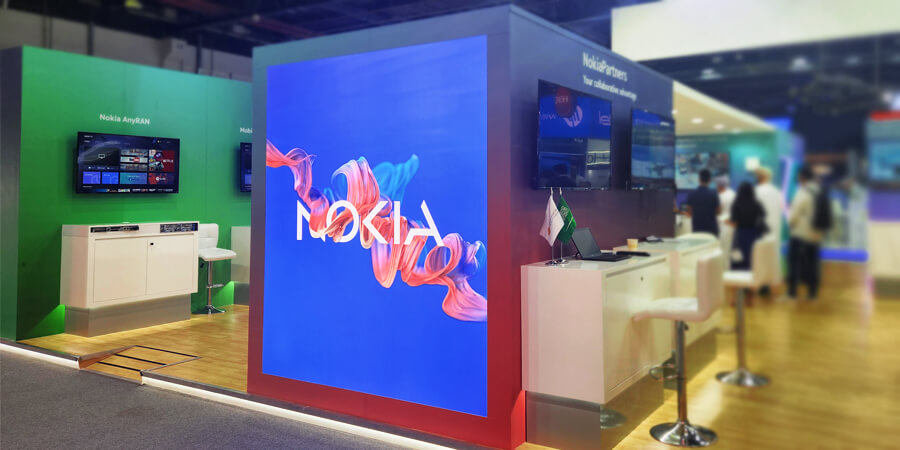At the week-long annual tech event (GITEX) in Dubai, Nokia’s Network Infrastructure (NI) team demonstrated how disruptive network technologies for infrastructure is pushing the boundaries of innovation and sustainability to open new opportunities for the telecom industry. The global B2B innovation leader showcased its technology prowess to help the telecom industry customers transform their business to the ‘power of n’ and harness the exponential potential of networks.
Premium Connectivity, Bridging Digital Divide, Sustainability
In today's digital age, the success of any service is heavily reliant on the quality of connectivity that supports and enables it. This is what Nokia calls ‘premium connectivity’, which is not defined by its price; it is determined by the added value it brings to services. Connectivity, much like water, is an essential resource that empowers individuals by providing access to knowledge and connecting them to the world.
In its pursuit of premium connectivity, Nokia’s aim is to create multi-service, multi-directional connections on a single infrastructure. The goal is to maximize utilization, fulfil business cases, and most importantly, ensure social impact via digital inclusion. Nokia’s vision is to transform the digital gap into a digital opportunity. This inclusivity-driven approach applies to all markets, from consumers and residential users to small and large enterprises across industries. Sustainability, green, social development, and digitalization are interconnected concepts. This is why Nokia firmly believes that there is no green without digital. Without reliable and affordable connectivity, there can be no business case, digital adoption, and progress towards a green and inclusive future. Premium connectivity acts as the cornerstone of digital transformation, enabling individuals and organizations to leverage the vast potential of the digital world. By bridging the digital divide and providing reliable and affordable connectivity, Nokia aims to empower communities, foster social sustainability, and drive inclusive growth.
Robust Network Infrastructure
The Nokia team demonstrated network automation to help operators with multi-vendor, multi-domain assurance, multi-vendor intent-based services fulfilment, zero-touch service provisioning and transport slicing enablement and assurance. It also showcased the path to 100G over PON (Passive Optical Network) through 25G PON OLT/ONT, in addition to demos such as 5G CPE and Beacon. Furthermore, the team showcased remote 800GE routing, security solutions with Deepfield and Automated Data Center Fabric Solution.
Nokia has introduced the groundbreaking 7730 Service Interconnect Router (SXR) platforms at GITEX, offering the audience a new and innovative approach. It delivers the power and benefits of service routing into IP access and aggregation networks to meet the capacity and capabilities demanded by broadband investments and evolving cloud network architectures. It’s also ideally suited to the requirements of smaller/distributed IP service edge network locations, complementing Nokia’s broader IP routing portfolio.
The platforms are powered by Nokia’s new FPcx fully programmable network processing unit (NPU) silicon, the industry’s newest routing silicon optimized for service providers. Purpose-built for service providers and network builders delivering mission-critical services, the cutting-edge routers deliver secure, assured, and sustainable IP services, while simplifying service evolution and network automation. These state-of-the-art technologies contribute to the development of a resilient network infrastructure for industries.
